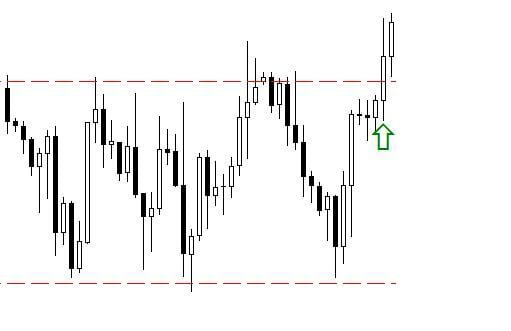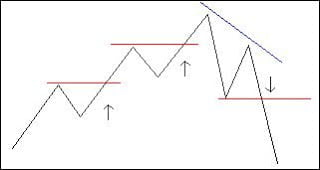Trade false breakouts in a simple way
The trading techniques based on breakouts are very popular because they are quite profitable and can be used to trade in any market. Many traders know the fact that after the price get caught into an area of consolidation a breakout usually occurs by which the price make a violent and extensive movement outside the area where it was consolidated.
These movements could be so strong that a trader can obtain high profits if enters the market in the right direction. However, the problem is that in many cases the traders who jump when there is what appears is a breakout realize the fact that the price returns to the area of consolidation and ends losing money. This is known as a fakeout or false breakout.
In fact, the fakeouts are so common that many investors trade and make money with strategies based on false breakouts. Therefore, in this article we will show the basic way to trade false breakouts.
An area of consolidation is a range in which the price gets caught during a specified time. The following image shows an example:

When a breakout occurs, the stop loss could be placed inside the consolidation zone to limit the risk. The problem is that in many times these breakouts become fakeouts. That’s why many traders may feel frightened at the thought of a potential fakeout, because a movement against the breakout direction could be very strong too.
For this reason, it is not recommended to enter the market in the first candle after the breakout. Some traders recommend to enter the market in the second candle after the breakout. For example, in a bullish breakout, the price usually touches the previous resistance (now it acts as a support), bounces back and starts moving upward again. The opposite applies for bearish breakouts. These are good opportunities to enter the market as we can see in the following example:

In this example, after the breakout, the price returns momentarily to the upper limit of the consolidation zone. This is a good position to enter the market in the direction of the breakout because the risk is lower. At the end if it is a fakeout and the price goes back into the area of consolidation the loss will be less. Many traders know that once a support is broken it becomes a resistance and once a resistance is crossed it becomes a support. This idea is the basis of this trading strategy to trade false breakouts.

Continuing with the example of the previous breakout, after the price temporarily returns to the upper limit of the area of consolidation (now it is a support), it begins to move upward with a strong momentum. In this case the stop loss could have been placed in the middle of the consolidation zone or a little below. Traders who have been patiently watching the market now knows that the odds are in favor of their trades as the price moves away quickly from the area of consolidation. Because of this there is little chance that the price returns again and the breakout becomes a fakeout.
If we wait until the price returns briefly and touch the consolidation zone after the breakout, that will increase the possibility of entering in a valid breakout. The key to trade false breakouts is patience.







